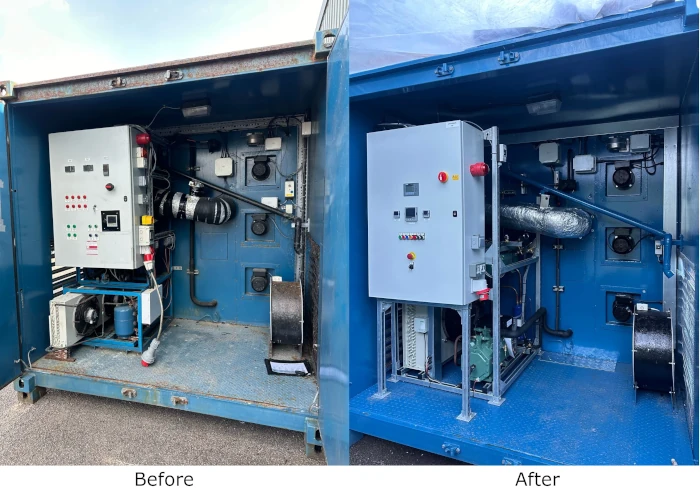EVALUATING ENVIRONMENTAL TEST CHAMBER REFURBISHMENT V. REPLACEMENT

In industries where precision testing is crucial, environmental test chambers play a pivotal role by simulating various environmental conditions. These chambers are integral for quality assurance, product development, and compliance testing. Over time, however, these chambers may require significant updates or replacements. The decision between refurbishing an existing chamber or purchasing a new one involves careful consideration of several factors:
- Cost-Effectiveness
- Refurbishment Benefits: Refurbishment can often be significantly less expensive than purchasing a new chamber. By updating specific components or systems, companies can extend the life of their existing chamber while achieving enhanced performance and reliability.
- Replacement Considerations: the life of their existing chamber while achieving enhanced performance and reliability. o Replacement Considerations: While a new chamber might come with the latest features and efficiencies, the initial investment is much higher.
- Technological Upgrades
- Refurbishment Opportunities: Upgrading key components such as controllers, sensors, and refrigeration systems can bring an older chamber in line with current technological standards. This allows businesses to leverage modern interfaces and improved precision without the need for a full replacement.
- Advancements with Replacement: New chambers typically come with the latest advancements, which might not be fully accessible through refurbishment.
- Downtime and Operational Disruption
- Minimized Interruptions with Refurbishment: The refurbishment process can often be completed faster than the lead time and setup required for a new chamber. This minimizes downtime and keeps testing schedules on track.
- Installation Time for New Chambers: Replacement usually involves longer lead times for delivery and setup, which can disrupt testing operations significantly.
- Customization and Scalability
- Tailored Modifications: Refurbishment allows for the customization of specific chamber components to better meet current testing requirements, potentially providing more tailored solutions than off-the-shelf new chambers.
- Scalability Options: While new chambers may offer scalability, refurbishment allows for incremental updates that can be adjusted based on evolving testing needs.
- Environmental Impact
- Sustainable Choice with Refurbishment: Opting to refurbish rather than replace contributes to sustainability efforts by reducing waste and the resources required to manufacture new equipment.
- Efficiency Gains with New Equipment: Newer models may be more energy-efficient which contributes to lower operational costs and reduced environmental footprint over time.
- Risk Management
- Refurbishment Risks and Rewards: While refurbishment can extend the life of a chamber and improve performance, the extent of improvement depends on the current condition of the chamber and the quality of refurbishment services.
- Reliability of New Equipment: New chambers come with warranties and expected reliability for extended periods, reducing the risk of unforeseen failures.
Conclusion:
Refurbishing environmental test chambers can be a cost-effective, sustainable, and less disruptive alternative to replacement, especially when existing chambers only require targeted updates. However, the decision should be based on a thorough evaluation of the chamber's current condition, the specific testing requirements, and long-term business goals. Balancing the immediate financial benefits of refurbishment with the potential long-term advantages of new technology is key to making the right choice for your organization.
